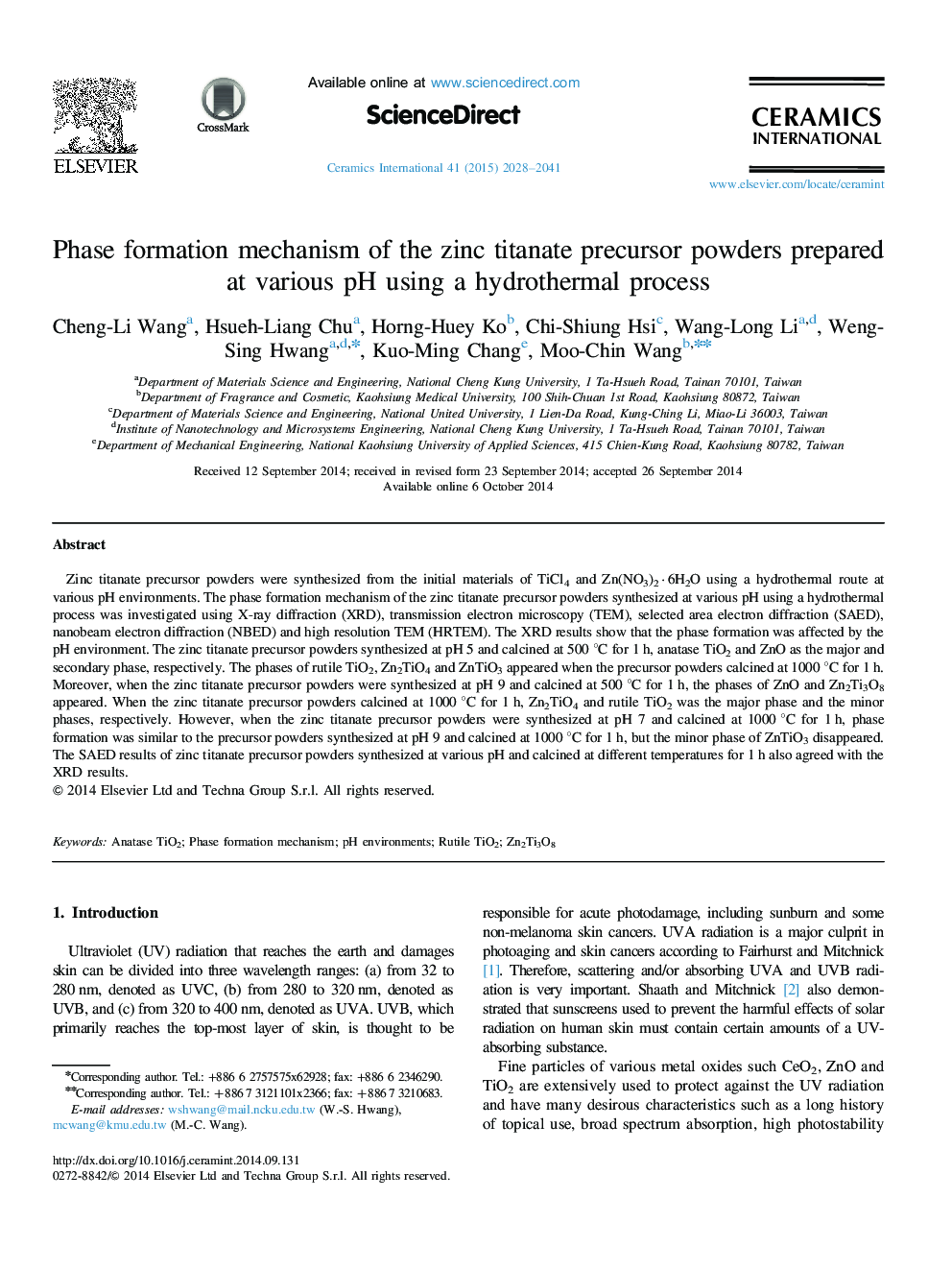| Article ID | Journal | Published Year | Pages | File Type |
|---|---|---|---|---|
| 1459215 | Ceramics International | 2015 | 14 Pages |
Zinc titanate precursor powders were synthesized from the initial materials of TiCl4 and Zn(NO3)2·6H2O using a hydrothermal route at various pH environments. The phase formation mechanism of the zinc titanate precursor powders synthesized at various pH using a hydrothermal process was investigated using X-ray diffraction (XRD), transmission electron microscopy (TEM), selected area electron diffraction (SAED), nanobeam electron diffraction (NBED) and high resolution TEM (HRTEM). The XRD results show that the phase formation was affected by the pH environment. The zinc titanate precursor powders synthesized at pH 5 and calcined at 500 °C for 1 h, anatase TiO2 and ZnO as the major and secondary phase, respectively. The phases of rutile TiO2, Zn2TiO4 and ZnTiO3 appeared when the precursor powders calcined at 1000 °C for 1 h. Moreover, when the zinc titanate precursor powders were synthesized at pH 9 and calcined at 500 °C for 1 h, the phases of ZnO and Zn2Ti3O8 appeared. When the zinc titanate precursor powders calcined at 1000 °C for 1 h, Zn2TiO4 and rutile TiO2 was the major phase and the minor phases, respectively. However, when the zinc titanate precursor powders were synthesized at pH 7 and calcined at 1000 °C for 1 h, phase formation was similar to the precursor powders synthesized at pH 9 and calcined at 1000 °C for 1 h, but the minor phase of ZnTiO3 disappeared. The SAED results of zinc titanate precursor powders synthesized at various pH and calcined at different temperatures for 1 h also agreed with the XRD results.
